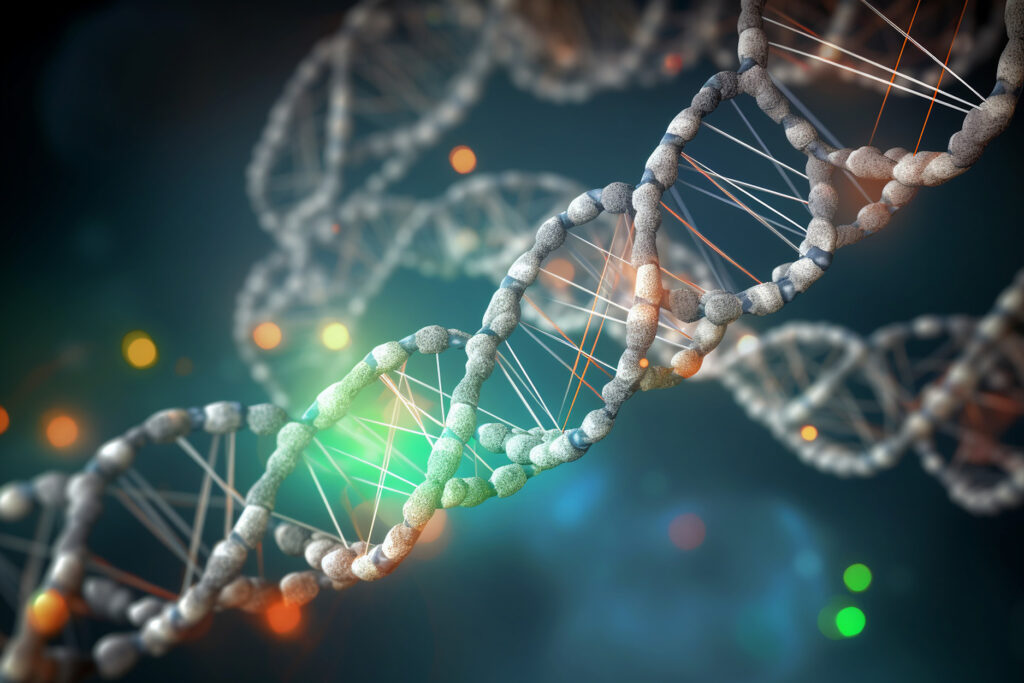The application of Artificial Intelligence (AI) techniques to a range of disciplines has been rapidly developing. Emerging AI can train on large sets of complex data, applying novel algorithms to these data sets, in order to produce results rapidly and accurately. One area where the use of AI holds great potential is in the medical field. AI techniques are being explored in all areas of medicine, from diagnosis to personal treatment to prediction of clinical outcomes. A growing number of research papers are reporting the impressive diagnostic performance of computer systems built using machine learning (ML), while deep learning (DL) techniques are transforming interpretation of imaging data using convoluted neural networks (CNNs), improving sensitivity and ensuring fewer false positives than human radiologists and pathologists. AI can also be used in medical training to help train junior physicians in computer aided diagnosis (CAD) and clinical decision making. Pediatric oncology is just one medical specialty where the power of AI is being explored. By using large datasets of patient data, such as radiology imaging or tissue specimen molecular analysis results, AI algorithms can be developed to predict tumor types and guide doctors towards personalized therapies. This has been possible in both hematologic and solid tumor pediatric malignancies.

In the hematologic malignancies, a combination of DL analysis and evaluation of microscopic blood images has been shown to facilitate the classification of leukemias [1, 2]. For example, DL analysis has been applied to the classification of acute lymphoblastic leukemia (ALL)[3], acute myeloid leukemia (AML)[4,5], and chronic myeloid leukemia (CML)[6] using bone marrow cell microscopy images. The use of AI in the automatic analysis of these microscopy images has been shown to result in a diagnostic accuracy of up to 95%, and in some studies to outperform expert hematologists. Other features of hematological malignancies, such as transcriptome (mRNA)[7] and DNA methylation profiles[8,9], have also been used to develop AI algorithms for cancer diagnosis and ALL subtyping.
AI has also been applied to diagnosis and management of pediatric solid tumors, including brain, soft-tissue and bone cancers. For example, the use of an ML-based classification model has recently been shown to improve the diagnostic accuracy of childhood intracranial tumors, especially posterior fossa tumors, using multiple magnetic resonance imaging (MRI) sequences[10]. When different tumor subtypes have overlapping neuroimaging features, the use of DL-CNNs has been shown to accurately discriminate between potential diagnoses, representing low-cost, high-efficiency decision-making support to guide diagnostic brain biopsy or tumor resection [11–20]. Algorithms have also been created for using DL to differentiate between medulloblastoma subtypes using histological images and tumor gene signatures (mRNA)[21-23]. Some researchers have even developed AI techniques that can be used intraoperatively by neurosurgeons to guide clinical management in real time. For example, one group used inflammatory markers on peripheral blood tests to classify pediatric benign and malignant brain tumors[24], while another explored the intraoperative diagnostic potential of Raman spectroscopy using an ML classifier to differentiate normal brain from neoplastic tissue in order to guide safe tumor resection[25]. Interestingly, Bruschi et al. used DL on proteomic analysis of cerebrospinal fluid to distinguish patients with brain tumors and classify tumor subtypes[26].

Lastly, AI techniques have been applied in the diagnosis of pediatric extracranial tumors, including soft-tissue and bone tumors. AI-based algorithms have been developed to classify benign and malignant bone lesions using multiple radiological images, such as X-ray and MRI, with similar accuracy compared to subspecialists and better performance than junior radiologists[27-29]. The same strategy has also been applied to pediatric soft-tissue sarcoma, where ML-based models have been shown to differentiate between malignant and benign soft-tissue masses[30-32]. For example, a DL-CNN system has been developed that can differentiate between soft-tissue sarcoma subtypes using histopathology tissue slides, which could help local pathologists to quickly narrow a differential diagnosis in children, adolescents, and young adults[33,34]. As with other cancer subtypes, tumor molecular biology data, such as cell-free DNA[35], DNA methylation[36] and tumor proteomic profiles[37], have also been used to train AI models for detection and classification of solid tumors. Lastly, AI has been applied for the detection and diagnosis of childhood dermatological tumors using histopathological and dermoscopic data, as well as photos of skin lesions[38,39].
While there is potential for AI to enhance the medical field, there are limitations and challenges to the development of AI for pediatric oncology diagnosis and care. The biggest challenges are the relative rarity of pediatric cancers compared to adults, as well as their molecular heterogeneity, and the relative poor funding for pediatric cancer research. This makes it more difficult to amass the necessary large historical data sets on which to train learning algorithms. However, this problem may be solved soon, considering the exponential advancements of AI algorithms and computing power, which decrease the dependence of AI operation on the amount of historical data sets. Researchers are also working together, sharing CNN algorithms across multiple institutions and shifting CNNs developed for adult disease to analysis of pediatric data.
Certainly, the evolution of AI technologies does give researchers and the broader public reason to believe that the prospects for quickening the pace of drug discovery and development are promising. These technological advances are already reshaping the complex and time-consuming processes involved in bringing new drug candidates to market – processes that tend to take 10-17 years and sometimes more. In other areas of medicine, AI is being used to identify suitable molecular targets for potential drugs, to speed up the process of designing and repurposing drugs, and to enhance clinical trials. Hopefully, AI and pediatric cancer research momentum will advance in parallel, unlocking new breakthroughs and improved outcomes for the current generation of pediatric cancer patients.
REFERENCES
- Shawly T, Alsheikhy AA. Biomedical diagnosis of leukemia using a deep learner classifier. Comput Intell Neurosci. 2022;2022:1568375.
- Karar ME, Alotaibi B, Alotaibi M. Intelligent medical IoT-enabled automated microscopic image diagnosis of acute blood cancers. Sensors (Basel). 2022;22:2348.
- Monaghan SA, Li JL, Liu YC, Ko MY, Boyiadzis M, Chang TY, et al. A machine learning approach to the classification of acute leukemias and distinction from nonneoplastic cytopenias using flow cytometry data. Am J Clin Pathol. 2022;157:546–53
- Abunadi I, Senan EM. Multi-method diagnosis of blood microscopic sample for early detection of acute lymphoblastic leukemia based on deep learning and hybrid techniques. Sensors (Basel). 2022;22:1629.
- Jawahar M, H S, L JA, Gandomi AH. ALNett: a cluster layer deep convolutional neural network for acute lymphoblastic leukemia classification. Comput Biol Med. 2022;148:105894.
- Huang F, Guang P, Li F, Liu X, Zhang W, Huang W. AML, ALL, and CML classification and diagnosis based on bone marrow cell morphology combined with convolutional neural network: a STARD compliant diagnosis research. Medicine (Baltimore). 2020;99:e23154.
- Mäkinen VP, Rehn J, Breen J, Yeung D, White DL. Multi-cohort transcriptomic subtyping of B-cell acute lymphoblastic leukemia. Int J Mol Sci. 2022;23:4574.
- Sanchez R, Mackenzie SA. Integrative network analysis of differentially methylated and expressed genes for biomarker identification in leukemia. Sci Rep. 2020;10:2123.
- Jiang H, Ou Z, He Y, Yu M, Wu S, Li G, et al. DNA methylation markers in the diagnosis and prognosis of common leukemias. Signal Transduct Target Ther. 2020;5:3.
- Huang J, Shlobin NA, Lam SK, DeCuypere M. Artificial intelligence applications in pediatric brain tumor imaging: a systematic review. World Neurosurg. 2022;157:99–105.
- Tariciotti L, Caccavella VM, Fiore G, Schisano L, Carrabba G, Borsa S, et al. A deep learning model for preoperative differentiation of glioblastoma, brain metastasis and primary central nervous system lymphoma: a pilot study. Front Oncol. 2022;12:816638.
- Zhao D, Grist JT, Rose HEL, Davies NP, Wilson M, MacPherson L, et al. Metabolite selection for machine learning in childhood brain tumour classification. NMR Biomed. 2022;35:e4673.
- Zhang M, Tam L, Wright J, Mohammadzadeh M, Han M, Chenn E, et al. Radiomics can distinguish pediatric supratentorial embryonal tumors, high-grade gliomas, and ependymomas. AJNR Am J Neuroradiol. 2022;43:603–10.
- Ye N, Yang Q, Chen Z, Teng Z, Liu P, Liu X, et al. Classification of gliomas and germinomas of the basal ganglia by transfer learning. Front Oncol. 2022;12:844197.
- Lu G, Zhang Y, Wang W, Miao L, Mou W. Machine learning and deep learning CT-based models for predicting the primary central nervous system lymphoma and glioma types: a multicenter retrospective study. Front Neurol. 2022;13:905227.
- Zhang M, Wong SW, Wright JN, Toescu S, Mohammadazdeh M, Han M, et al. Machine assist for pediatric posterior fossa tumor diagnosis: a multinational study. Neurosurgery. 2021;89:892–900.
- Zhang M, Wong SW, Lummus S, Han AR, Ahmadian SS, Prolo LM, et al. Radiomic phenotypes distinguish atypical teratoid/rhabdoid tumors from medulloblastoma. AJNR Am J Neuroradiol. 2021;42:1702–8.
- Ye Z, Srinivasa K, Meyer A, Sun P, Lin J, Viox JD, et al. Diffusion histology imaging differentiates distinct pediatric brain tumor histology. Sci Rep. 2021;11:4749.
- Zhao Y, Lu Y, Li X, Zheng Y, Yin B. The evaluation of radiomic models in distinguishing pilocytic astrocytoma from cystic oligodendroglioma with multiparametric MRI. J Comput Assist Tomogr. 2020;44:969–76.
- Quon JL, Bala W, Chen LC, Wright J, Kim LH, Han M, et al. Deep learning for pediatric posterior fossa tumor detection and classification: a multi-institutional study. AJNR Am J Neuroradiol. 2020;41:1718–25.
- Attallah O. MB-AI-His: histopathological diagnosis of pediatric medulloblastoma and its subtypes via AI. Diagnostics (Basel). 2021;11:359.
- Attallah O. CoMB-deep: composite deep learning-based pipeline for classifying childhood medulloblastoma and its classes. Front Neuroinform. 2021;15:663592.
- Joshi P, Jallo G, Perera RJ. In silico analysis of long non-coding RNAs in medulloblastoma and its subgroups. Neurobiol Dis. 2020;141:104873.
- Khayat Kashani HR, Azhari S, Moradi E, Samii F, Mirahmadi MS, Towfiqi A. Predictive value of blood markers in pediatric brain tumors using machine learning. Pediatr Neurosurg. 2022;57:323–32.
- Jabarkheel R, Ho CS, Rodrigues AJ, Jin MC, Parker JJ, Mensah-Brown K, et al. Rapid intraoperative diagnosis of pediatric brain tumors using Raman spectroscopy: a machine learning approach. Neurooncol Adv. 2022;4:vdac118.
- Bruschi M, Petretto A, Cama A, Pavanello M, Bartolucci M, Morana G, et al. Potential biomarkers of childhood brain tumor identified by proteomics of cerebrospinal fluid from extraventricular drainage (EVD). Sci Rep. 2021;11:1818.
- Eweje FR, Bao B, Wu J, Dalal D, Liao WH, He Y, et al. Deep learning for classification of bone lesions on routine MRI. EBioMedicine. 2021;68:103402.
- He Y, Pan I, Bao B, Halsey K, Chang M, Liu H, et al. Deep learning-based classification of primary bone tumors on radiographs: a preliminary study. EBioMedicine. 2020;62:103121.
- Pan D, Liu R, Zheng B, Yuan J, Zeng H, He Z, et al. Using machine learning to unravel the value of radiographic features for the classification of bone tumors. Biomed Res Int. 2021;2021:8811056.
- Wang H, Zhang J, Bao S, Liu J, Hou F, Huang Y, et al. Preoperative MRI-based radiomic machine-learning nomogram may accurately distinguish between benign and malignant soft-tissue lesions: a two-center study. J Magn Reson Imaging. 2020;52:873–82.
- Consalvo S, Hinterwimmer F, Neumann J, Steinborn M, Salzmann M, Seidl F, et al. Two-phase deep learning algorithm for detection and differentiation of Ewing sarcoma and acute osteomyelitis in paediatric radiographs. Anticancer Res. 2022;42:4371–80.
- Yang Y, Zhou Y, Zhou C, Ma X. Novel computer aided diagnostic models on multimodality medical images to differentiate well differentiated liposarcomas from lipomas approached by deep learning methods. Orphanet J Rare Dis. 2022;17:158.
- Zhang X, Wang S, Rudzinski ER, Agarwal S, Rong R, Barkauskas DA, et al. Deep learning of rhabdomyosarcoma pathology images for classification and survival outcome prediction. Am J Pathol. 2022;192:917–25.
- Frankel AO, Lathara M, Shaw CY, Wogmon O, Jackson JM, Clark MM, et al. Machine learning for rhabdomyosarcoma histopathology. Mod Pathol. 2022;35:1193–1203.
- Peneder P, Stütz AM, Surdez D, Krumbnholz M, Semper S, Chicard M, et al. Multimodal analysis of cell-free DNA whole-genome sequencing for pediatric cancers with low mutational burden. Nat Commun. 2021;12:3230.
- Koelsche C, Schrimpf D, Stichel D, Sill M, Sahm F, Reuss DE, et al. Sarcoma classification by DNA methylation profiling. Nat Commun. 2021;12:498.
- Lazova R, Smoot K, Anderson H, Powell MJ, Rosenberg AS, Rongioletti F, et al. Histopathology-guided mass spectrometry differentiates benign nevi from malignant melanoma. J Cutan Pathol. 2020;47:226–40.
- Tognetti L, Bonechi S, Andreini P, Bianchini M, Scarselli F, Cevenini G, et al. A new deep learning approach integrated with clinical data for the dermoscopic differentiation of early melanomas from atypical nevi. J Dermatol Sci. 2021;101:115–22.
- Zhang AJ, Lindberg N, Chamlin SL, Haggstrom AN, Mancini AJ, Siegel DH, et al. Development of an artificial intelligence algorithm for the diagnosis of infantile hemangiomas. Pediatr Dermatol. 2022;39:934–6.




